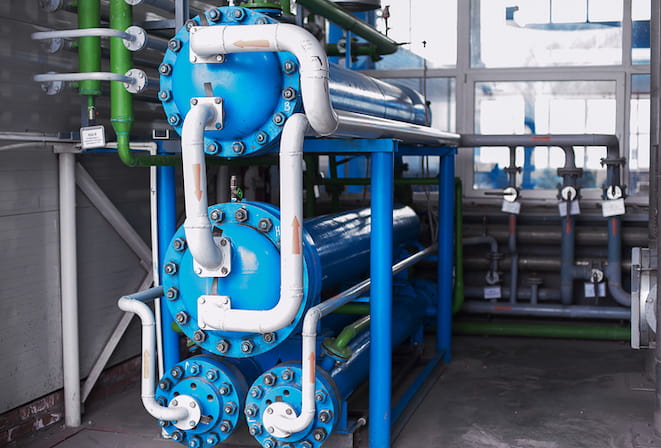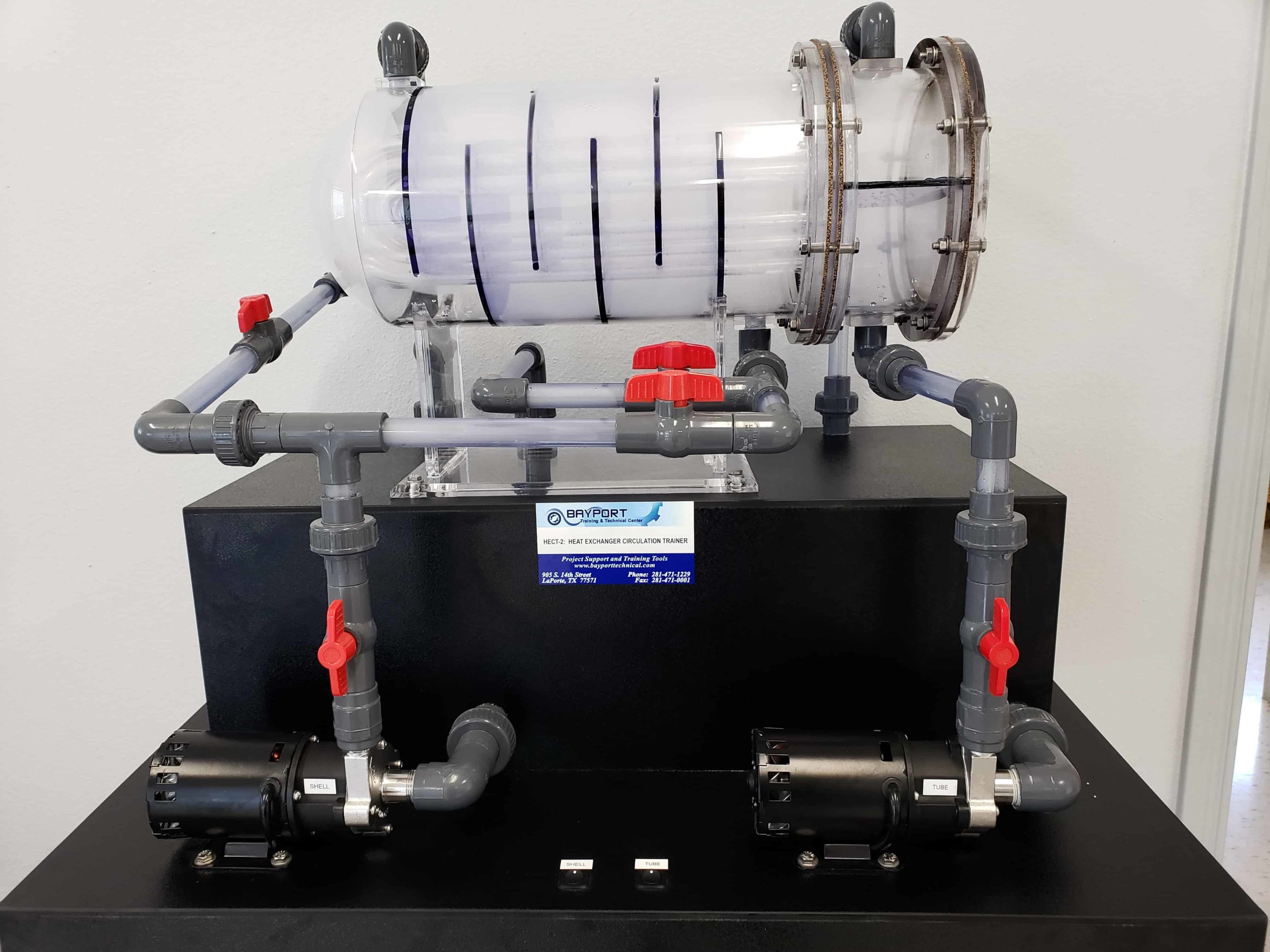Exploring Advanced CFD Modeling in DVS Heat Transfer Systems
Wiki Article
A Comprehensive Overview to Choosing the Right Heat Transfer Equipments for Your Demands
Choosing the ideal Heat transfer system is important for operational efficiency. Numerous systems accommodate various demands, affected by factors such as temperature level array and fluid type. Comprehending the principles behind Heat transfer, such as conduction, convection, and radiation, is important. In addition, assessing energy sources and upkeep techniques can affect lasting performance. A closer examination of these considerations reveals just how to tailor a system to particular demands. What should one prioritize in this facility decision-making procedure?Recognizing Heat Transfer: Trick Ideas and Concepts
Although Heat transfer might appear like an uncomplicated principle, it encompasses a range of concepts that are basic for effective system design. Understanding these concepts is necessary for designers and engineers that aim to optimize thermal performance in numerous applications. Transmission, for instance, involves the transfer of Heat via strong materials, while convection describes the movement of Heat within fluids. Radiation, another essential principle, describes how Heat can be moved via electro-magnetic waves. Each of these devices plays an important duty in determining just how power moves within a system. By thoroughly realizing these principles, professionals can make informed choices, guaranteeing that Heat transfer systems operate successfully and fulfill the details needs of their applications
Kinds Of Heat Transfer Systems: An Overview
Recognizing the concepts of Heat transfer lays the foundation for exploring the numerous kinds of Heat transfer systems readily available. Heat transfer systems can be categorized largely into three types: radiation, convection, and conduction. Conduction entails Heat transfer via solid products, counting on direct call in between fragments. Convection, on the various other hand, occurs in liquids (gases and liquids) where the activity of the fluid itself promotes Heat transfer. Radiation involves the transfer of Heat via electro-magnetic waves and does not require a tool, permitting it to occur in a vacuum cleaner. Each kind of system has distinctive features and applications, making it essential for individuals and companies to very carefully examine their certain requirements when selecting one of the most appropriate Heat transfer remedy.Applications of Heat Transfer Solutions in Different Industries
Heat transfer systems play a crucial role across different markets, affecting efficiency and item top quality. In industrial manufacturing procedures, they facilitate specific temperature control, while in food and drink handling, they guarantee safety and security and conservation. Furthermore, a/c and environment control systems rely heavily on effective Heat transfer to maintain comfortable environments.Industrial Manufacturing Processes

Countless industrial manufacturing processes count greatly on efficient Heat transfer systems to make the most of efficiency and boost product high quality. In fields such as metalworking, Heat exchangers play an essential duty in preserving ideal temperatures throughout welding, casting, and creating. These systems ensure consistent Heat distribution, which is important for attaining desired material residential or commercial properties. In the chemical production industry, Heat transfer systems promote specific temperature control during reactions, impacting yield and safety. In addition, in textile production, efficient Heat management is important for dyeing and completing procedures, affecting color uniformity and material top quality. By picking appropriate Heat transfer modern technologies, suppliers can improve energy effectiveness and lower functional costs, eventually leading to a more competitive and lasting manufacturing atmosphere.
Food and Beverage Handling
Effective Heat transfer systems are similarly crucial in the food and drink processing industry, where keeping perfect temperature levels is essential for food security and top quality. These systems play an important role in processes such as pasteurization, cooking, and sanitation, guaranteeing that items are secure for consumption and preserve their dietary value. Heat exchangers, for example, effectively transfer Heat in between fluids, maximizing power usage while decreasing temperature variations. In addition, refrigeration systems are essential for protecting subject to spoiling items and expanding life span. The selection of Heat transfer technology directly affects operational effectiveness and item honesty, making it essential for food and beverage suppliers to pick the appropriate systems tailored to their particular processing demands. This mindful choice eventually contributes to customer fulfillment and food safety.
Heating And Cooling and Environment Control
While several sectors count on Heat transfer systems for efficiency, HEATING AND COOLING (Heating, Air Flow, and A/c) plays a necessary function in this hyperlink keeping indoor climate control throughout different settings. These systems utilize Heat transfer principles to manage moisture, air, and temperature top quality, making sure convenience and security in domestic, commercial, and industrial environments. Properly created cooling and heating systems improve power effectiveness, decrease functional costs, and minimize environmental impact. In industrial buildings, for example, reliable environment control contributes to worker efficiency and customer satisfaction. In commercial applications, cooling and heating systems aid keep suitable problems for equipment procedure and item conservation. Selecting the ideal Heat transfer system is vital for meeting particular climate control demands and attaining total system efficiency.Examining Energy Sources for Heat Transfer Equipments
In examining energy resources for Heat transfer systems, a contrast of sustainable energy choices and fossil fuel factors to consider is vital. Eco-friendly sources, such as solar and wind, deal sustainable options that can lower ecological influence. On the other hand, fossil fuels remain common due to their well established infrastructure and power thickness, prompting a cautious evaluation of both choices.Renewable Resource Options

Nonrenewable Fuel Source Factors To Consider
Assessing nonrenewable fuel source factors to consider is crucial for the effectiveness and sustainability of Heat transfer systems. Fossil gas, such as gas, oil, and coal, are typical power resources that offer substantial Heat output, making them prominent options for property and industrial applications. Their environmental effect, consisting of greenhouse gas emissions and resource deficiency, elevates worries. When choosing a warmth transfer system, it is crucial to assess the availability, price, and regulatory elements connected with these gas. In addition, the effectiveness of nonrenewable fuel source systems must be considered, as greater performance can alleviate some environmental disadvantages. Inevitably, a balanced method weighing efficiency and sustainability can lead decision-makers toward the most ideal Heat transfer solution for their certain requirements.Elements to Take Into Consideration When Selecting a Warm Transfer System
Selecting a suitable Heat transfer system calls for careful factor to consider of numerous factors that can substantially impact effectiveness and efficiency. One essential element is the operating temperature variety, which determines the materials and layout appropriate for the application. Additionally, the kind of fluid utilized in the system-- whether gas or liquid-- influences Heat transfer performance and compatibility. The system's size and capability need to straighten with the particular requirements of the operation to prevent ineffectiveness. Energy source availability is additionally important, influencing operating expenses and sustainability. The setup atmosphere, consisting of space constraints and availability for upkeep, plays a considerable duty in system selection. Finally, regulative compliance and security standards should be taken into consideration to ensure the system fulfills all lawful demands.Upkeep and Effectiveness Optimization for Heat Transfer Systems
Preserving Heat transfer systems is vital for ensuring maximum effectiveness and durability. Routine upkeep activities, such as cleaning Heat exchangers and inspecting insulation, assistance avoid efficiency losses due to fouling and thermal linking. Additionally, keeping track of system criteria, look at these guys consisting of pressure and temperature, allows for early discovery of anomalies, lessening downtime and expensive repair services. Carrying out a precautionary maintenance timetable can optimize performance and expand the lifespan of elements. Moreover, upgrading to sophisticated control systems can improve operational efficiency by getting used to differing tons and conditions. By focusing on maintenance and effectiveness optimization, drivers can accomplish decreased power consumption, reduced operational costs, and enhanced total system reliability, inevitably causing much better source application and an extra sustainable operation.Future Fads in Heat Transfer Technologies
As markets progressively prioritize sustainability and power effectiveness, future patterns in Heat transfer innovations are established to undergo significant changes. Innovations such as sophisticated materials, consisting of carbon nanotubes and nanofluids, assure boosted thermal conductivity and performance. Furthermore, the assimilation of renewable resource sources right into Heat transfer systems is acquiring energy, promoting eco-friendly options. Smart modern technologies, including IoT sensors, are anticipated to revolutionize tracking and control, making it possible for real-time data analysis for maximized performance. The growth of small and modular systems will certainly facilitate easier setup and maintenance, catering to varied applications. These innovations suggest a shift towards more sustainable, effective, and adaptable Heat transfer options, lining up with worldwide power goals and ecological requirements.
Often Asked Questions
What Are the Ecological Impacts of Heat Transfer Equipments?
The environmental impacts of Heat transfer systems can consist of greenhouse gas discharges, power consumption, and possible thermal contamination. In addition, improper disposal of materials and ineffectiveness content can add to resource depletion and environment disturbance.How Do I Calculate the Cost-Effectiveness of a Warmth Transfer System?
To determine the cost-effectiveness of a warmth transfer system, one must analyze initial prices, functional expenses, maintenance demands, and energy efficiency, contrasting these aspects against the anticipated life-span and efficiency of the system.Can Heat Transfer Systems Be Made Use Of in Residential Setups?
Heat transfer systems can without a doubt be used in property setups. They give effective heating and cooling remedies, making homes much more comfortable while potentially lowering power costs. Their convenience permits numerous applications in domestic settings.What Safety And Security Rules Relate To Heat Transfer Equipments?
Security regulations for Heat transfer systems usually include standards on setup, upkeep, and operation. Compliance with regional building codes, manufacturer specs, and market standards is necessary to assure secure and efficient system efficiency in various applications.Exactly How Do Different Products Affect Heat Transfer Performance?

Conduction, for instance, involves the transfer of Heat via solid materials, while convection refers to the motion of Heat within liquids. Comprehending the concepts of Heat transfer lays the groundwork for discovering the numerous kinds of Heat transfer systems offered. Heat exchangers, for circumstances, successfully move Heat in between fluids, maximizing energy use while lessening temperature level changes. In assessing power resources for Heat transfer systems, a contrast of eco-friendly energy options and fossil fuel considerations is necessary. Steels, such as copper and aluminum, conduct Heat successfully, whereas insulators like rubber and glass slow down Heat flow.
Report this wiki page